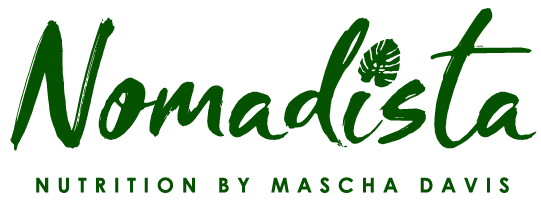Turmeric lattes, chia puddings, and matcha everything have taken over wellness menus—and marketing budgets. These ingredients are praised for fighting inflammation, boosting energy, and improving brain health. But how much of that is legit science… and how much is just really great branding?
Let’s break down what “superfood” really means—and then look at three of the biggest names in the game to separate the hype from the facts.
First—What Even Is a Superfood?
Here’s the truth: “Superfood” isn’t a scientific term. There’s no clinical definition, no official nutrient threshold, and no regulation around how the word is used. It’s a marketing label used to promote foods rich in things like antioxidants, omega-3s, fiber, or phytochemicals.
That doesn’t mean the foods themselves are bad—in fact, many so-called superfoods are genuinely nutrient-dense. But the term can be misleading, implying that a single food has extraordinary health powers that can somehow override the rest of your diet.
Spoiler: it can’t.
Instead of thinking of superfoods as miracle workers, consider them nutrient boosters. They can play a valuable role in a healthy, balanced diet—but they’re not the main event.
Here are some trending superfoods and my take on them-
1. Turmeric: Golden or Overrated?
Turmeric has been used for centuries in Ayurvedic medicine, but it only recently became the darling of Western wellness culture—largely thanks to curcumin, its main active compound. You’ll find turmeric in everything from lattes to face masks, with promises of anti-inflammatory and antioxidant superpowers.
The Science:
Curcumin has been shown to reduce markers of inflammation and oxidative stress in several studies. That said, curcumin isn’t easily absorbed by the body—unless consumed with black pepper (which contains piperine) and a fat source to boost bioavailability.
Bottom Line:
Turmeric does have anti-inflammatory potential, especially if consumed consistently and with absorption enhancers. But one golden milk latte won’t fix chronic inflammation.
2. Chia Seeds: Tiny But Mighty?
Chia seeds are a wellness staple—blended into smoothies, soaked into puddings, and sprinkled over everything. But what does science actually say?
The Science:
Chia seeds are rich in dietary fiber—about 30–34 g per 100 g—with most of it being insoluble, which supports regularity and fullness. They’re also one of the best plant-based sources of alpha-linolenic acid (ALA), a type of omega-3 fatty acid. In addition, chia contains protein with all essential amino acids, and it's naturally gluten-free. They're packed with key minerals and offer antioxidant compounds that help protect cells from damage. According to recent research, regular chia consumption may support cardiovascular and metabolic health by helping reduce blood pressure, improve cholesterol, and regulate blood sugar.
Bottom Line:
Chia seeds live up to much of their reputation. Thanks to their fiber, omega-3s, and antioxidants, they can support heart, digestive, and metabolic health—especially when included regularly in a balanced diet.
3. Matcha: The Green Tea That Packs a Punch
Matcha isn’t just trendy—it’s one of the most concentrated sources of antioxidants among green teas. Because the tea leaves are shade-grown and stone-ground into powder, matcha delivers higher levels of catechins—plant compounds with antioxidant properties—like EGCG, plus chlorophyll, caffeine, and L-theanine.
The Science:
Matcha has been found to support brain function, reduce inflammation, and protect against oxidative stress. EGCG, in particular, has been linked to anti-cancer, heart health, and neuroprotective benefits. Matcha also contains more rutin, a plant pigment that may help strengthen blood vessels, along with vitamin C—both of which add to its antioxidant potential.
Bottom Line:
This is one superfood that genuinely lives up to the buzz. Matcha is rich in compounds that may support heart, brain, and metabolic health—but the benefits come from consistent use, not just sipping it once at a trendy cafe. That said, it is best to choose high-quality, preferably Japanese-grown and organic matcha, as tea plants can absorb heavy metals like lead and cadmium from the soil, especially when the whole leaf is powdered.
How to Think About Superfoods
Let’s keep it real. Superfoods can support your health, but they’re not magic. Here’s a simple framework:
Add, Don’t Rely – Superfoods can be a great addition to your diet, but they should not replace the foundations of a healthy diet, like fruits, vegetables, whole grains, and lean protein.
Consistency Over Novelty – One turmeric latte won’t change your life. Regular intake, even in small amounts, is what makes a difference.
Prioritize Quality – Where and how a food is grown makes a difference. Look for reputable brands that use third-party testing—an independent check to make sure the product is safe, clean, and actually contains what it claims.
So, Are They Worth the Hype?
In short: mostly, yes—with context. Turmeric, chia seeds, and matcha each bring something real to the table. But they’re not shortcuts. They’re tools you can use within a bigger lifestyle puzzle that includes movement, stress management, sleep, and (of course) the basics of good nutrition.
So go ahead—sip your matcha, stir in chia, or sprinkle turmeric on your roasted veggies. Just know that wellness isn’t found in a single scoop.





